What is an open-ended question? An open-ended question is one that can only be answered by a unique thought or statement in someone’s own words. Unlike a closed-ended question, it cannot be answered in one word, or by yes/no, or by multiple choice. Open-ended questions encourage people to incorporate more of their own information and point of view.
For stronger connections, better insights, and more business, experts recommend one conversational tool above all in the demo or discovery phase: open-ended questions. Profile writers use them all the time to elicit thoughts and anecdotes from their subjects.
Smart marketers also use them to maximize authentic engagement with new business leads and current clients. However, there’s a method and skill required to ask open-ended questions… and part of it is realizing and leveraging the other, equally important benefits of asking closed-ended questions.
In this article, we’ll go over the best habits to get into for asking open-ended questions, when to use closed-ended questions instead, scenarios when you might need to use both, the different ways they impact data collection, and some examples of open versus closed questions as used in marketing, sales, and content interviews.
But first, a little teaser of examples for each approach…
Examples of open-ended questions:
- Where would you like your business to grow from here?
- What would success look like to you?
- What campaigns are out there right now that caught your eye, and for what reasons?
- What are a couple of day-to-day practices of yours that people can implement for greater success/fulfillment in their own lives?
- Can you give me a few dates for a follow-up call?
Examples of closed-ended questions
- Are you satisfied with your current sales numbers?
- What is your #1 goal?
- Did you like your competitor’s latest campaign/commercial?
- Where can someone go to learn more about what you do?
- When would you like to set a follow-up?
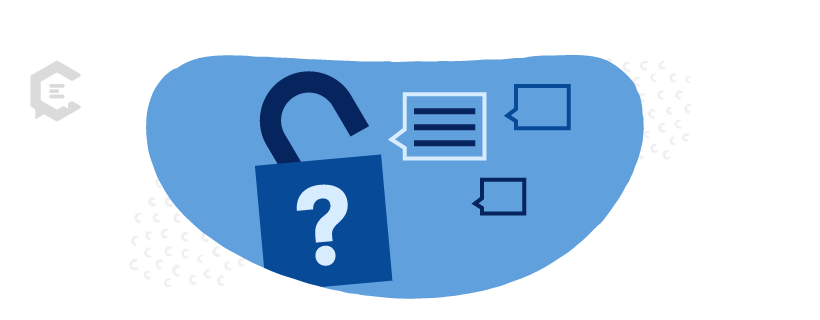
What is an open-ended question?
An open-ended question is one that can only be answered by a unique thought or statement in someone’s own words — it cannot be answered in one word, or by yes/no, or by multiple choice. Open-ended questions encourage people to come up with a more thoughtful and filled-out answer incorporating more of their own information and point of view.
People who want to keep an exchange of information and flow of thoughts going with whomever they’re interviewing will generally stick with open-ended questions. These questions encourage interviewees to explore their “why” and to give context to their decisions.
They illuminate the reasoning behind decisions and opinions. In interviews, they help the writer/producer get to know and understand a subject… and then pass that insight along to readers.
Why/when are open-ended questions recommended/important?
They can be used at any time when it’s more important to the interviewer to elicit thoughts and opinions and insights than to get definitive answers.
Situations may include:
- Informational interviews with business prospects
- Discovery sessions with potential or new clients
- Feedback sessions with existing clients
- Testimonial interviews
- Interviews for profiles
- Market research — when you’re trying to gauge people’s perception of a brand
- Market research — customer insight interviews
- Customer satisfaction surveys — solicit people’s opinions
Do’s for crafting open-ended questions:
- Do start off with “Why…” or “What…” But if you fear that even with that opening, your question will lead to a succinct answer, build in a request for the interviewee to share their thoughts, not get straight to the point.
- Do ask people to explain something.
- Do ask people for their thoughts on something.
- Do ask for an example.
- Do remember, an open-ended question can also be phrased as a statement: “Tell me about a moment when…”
- Do follow a closed-ended question with an open-ended question — to get exact data, and then an explanation of the data provided.
Don’ts for crafting open-ended questions:
- Don’t make them so broad that people get confused.
- Don’t encourage lengthy answers to every question (especially if this is a survey situation).
- Don’t overuse them and forget to get quantitative data.
- Don’t make them two-part questions where each part requires its own separate train of thought.
- Don’t prompt an answer or make any suggestions that could push an answer in a certain direction.
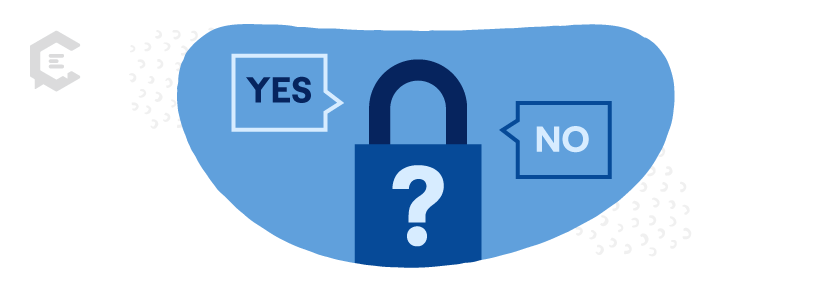
What is a closed-ended question?
We’ve briefly touched upon closed-ended questions just to compare with open-ended ones. Now, let’s define exactly what they are and in what scenarios it’s better to use them.
Closed-ended questions require one specific answer — either a yes/no or a choice between a few options. Sometimes they’re in pursuit of a fact, and sometimes a decision. These types of questions are used to collect quantitative data, which can be mapped out on charts or graphs.
The answers are also used to come up with numerical ratings of how a company is performing or meeting customer expectations. When used by salespeople, closed-ended questions can also be a tactic to assess how cold or warm a lead is, and to move the sales process along.
For interviewers such as writers, closed-ended questions are often used to establish background facts about a topic or person. They can also be used for winding up an exploratory Q+A session with some definitive conclusions.
You see this on reality TV interviews often. One person shares her drama with another cast member, explores the person’s possible motivations, speculates on her intentions, and then the interviewer asks: Do you trust that person? No. Do you still think of her as a friend? No.
It puts a bow on the conversation and lets viewers know where the storyline is headed.
Why/when are closed-ended questions important to use?
- When you want to get fast facts or basic biographical details
- When you need answers to be exact
- When you are collecting quantitative data
- When the answer is provided, it will determine whether or not it makes sense to continue pursuing a lead (especially related to budget and timeline)
- When you are setting goals and KPIs that you’ll be expected to deliver against
- When you’re fact-checking
- When your legal department is going to want to put information into a contract
Do’s for crafting closed-ended questions:
- Do begin the question with Have, Will or Do/Did.
- Do switch up the question structure between yes/no, multiple-choice, rating scale multiple-choice, and fact-based answers.
- Do create the questions according to what data you need to get from a study, survey, or questionnaire.
- Do follow (or lead) a closed-ended question with an open-ended question to get both quantitative and qualitative information.
Don’ts for crafting closed-ended questions:
- Don’t provide a selection of multiple choice answers that’s too limited to cover the full range of possibilities.
- Don’t assume that everyone will be able to make a yes/no answer based on their experience of something.
- Don’t attempt to craft complex or two-part questions as you might with an open-ended question.
- Don’t use this format to explore emotions or feelings.
- Don’t create a survey or study that is only closed-ended questions; at minimum have an open-ended question at the end of each section that allows people to explain their answers or give context to them.
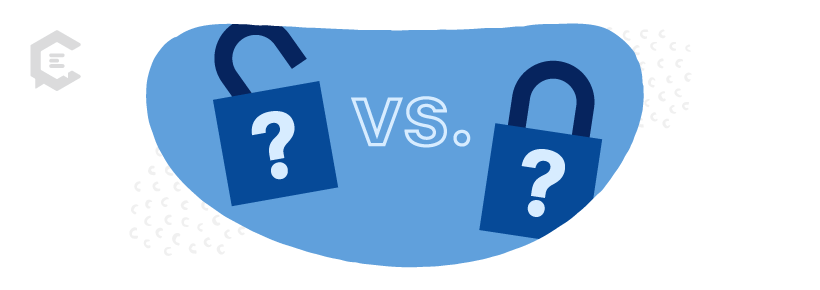
Open-ended vs. closed-ended questions
Let’s have a look at the different purposes they serve, how they complement each other, what kind of data they garner, and how each can be used in our three scenarios (a sales call, a marketing exercise, a writers’ interview).
- An open-ended question opens up a topic for exploration and discussion while a closed-ended question leads to a closed-off conversational path. After “Yes” or “No” or the specific one-word answer to the question, the thread is done.
- Open-ended questions lead to qualitative answers while closed-ended questions lead to quantitative answers.
- Open-ended questions ask people for their why while closed-ended questions ask people for their decision.
In shopper behavior analysis:
- Open-ended questions spend time peeling back the layers of why someone feels some way about a product.
- Closed-ended questions take a person through their buying habits: how often do they buy a product, which brand do they typically buy, have they heard of your brand, do they buy it.
In sales meetings:
- Open-ended questions help you understand your potential customer better.
- Closed-ended questions help you realistically decide whether there’s business to close.
In marketing research:
- Open-ended questions are good for getting customer insights.
- Closed-ended questions are good for establishing who is a loyal customer and who has little brand awareness or loyalty.
In writing profiles or bios:
- Open-ended questions are good for establishing a connection, getting lots of nuanced details, and pulling back the curtain on a person’s life.
- Closed-ended questions are good for establishing their credentials, hitting biographical details, and fact-checking anecdotes you discovered during preliminary research.
Sample open-ended questions vs. closed-ended questions
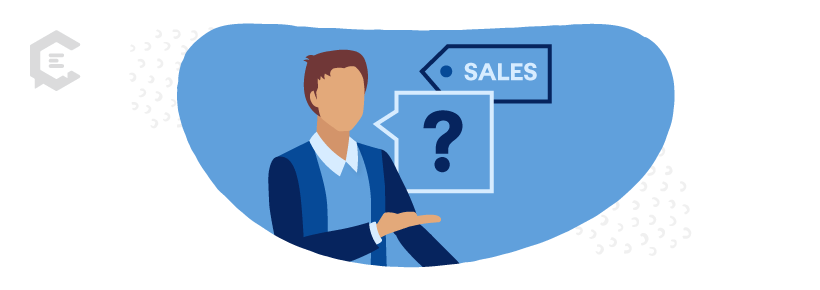
10 open-ended vs. closed question set examples
for sales professionals
When you’re in sales, open-ended questions are good for understanding more about your customer and opening up a real dialogue. Closed-ended questions are good for getting prospects to let you know whether they have any intentions of signing a contract any time soon.
Sales example 1:
CLOSED: Were you happy with your former [agency/SaaS provider/other competing product or vendor]?
OPEN: What was it about your former [competing product/vendor] that has you looking for a new vendor?
Sales example 2:
CLOSED: Are you satisfied with your current sales numbers?
OPEN: Where would you like your business to grow from here?
Sales example 3:
CLOSED: Have you ever executed the kind of project/campaign we specialize in before, either on your own or with a different partner?
OPEN: Tell me about a case study or existing campaign/project in the market that is in this category that you really like. It can be one of your own, or another company.
Sales example 4:
CLOSED: (after a product demo) Do you have any questions?
OPEN: We went through a lot of information just now. What part stood out to you the most, either because you loved it or because you’d like a little more time to understand?
Sales example 5:
CLOSED: (after going through prices) Does this fall more-or-less into the budget range you have in mind?
OPEN: Could you tell me how you’d want to customize a scope-of-work or what services would be important to you? That way I can come up with a price quote.
Sales example 6:
CLOSED: What’s your main goal that you’re hoping I can help with?
OPEN: What are your immediate and also your big-picture goals?
Sales example 7:
CLOSED: Are you interested in buying/subscribing to/getting a membership to the product I’ve shown you today?
OPEN: Now that we’ve previewed our product/service together, what are you thinking your next step will be?
Sales example 8:
CLOSED: When would you like to set a follow-up?
OPEN: Can you give me a few dates for a follow-up call?
Sales example 9:
CLOSED: Do you feel like you got all the information you needed?
OPEN: Before we wrap, can you tell me what you’d like to look over again — either here or as an email follow-up?
Sales example 10:
CLOSED: On a scale of 1-10, how would you rate our team’s service up to this point?
OPEN: Please share anything specific that stood out to you about the service you’ve received from our team so far.
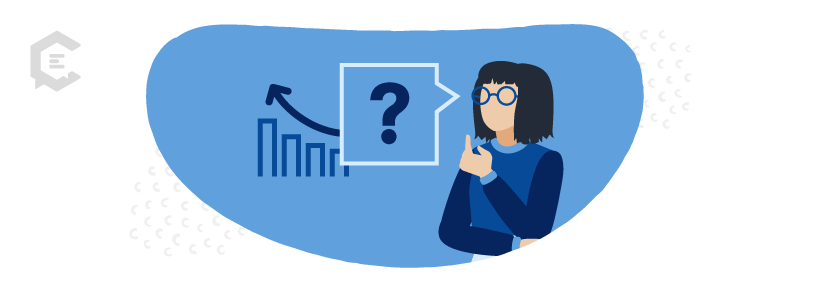
10 open-ended vs. closed question set examples for marketers
Marketers are constantly interacting with customers, stakeholders, current clients and leads — their lives are an interesting mix of collecting data and fostering connection.
Just look at a social media manager’s day-to-day: Half may be spent analyzing paid campaign results and crunching numbers. The other half may be spent following up on an angry customer’s Facebook tirade or getting people’s permission to use content for UGC.
Today’s marketer needs to be able to flip from analyzing facts to feelings, balance trends with tried-and-true, ask closed-ended to open-ended questions instantaneously, and then explain their findings to the non-marketers that they work with or are hoping to work with soon.
Marketing example 1:
CLOSED: Are you satisfied with the quantity and quality of new business leads you’re currently getting?
OPEN: What are your thoughts on the new business/lead-gen process at your company as it is now?
Marketing example 2:
CLOSED: What is your #1 goal?
OPEN: What would success look like to you?
Marketing example 3:
CLOSED: Have you considered putting your budget toward X channel or tactic?
OPEN: What channels and tactics do you feel are important to include in your next marketing plan?
Marketing example 4:
CLOSED: Did you like your competitor’s latest campaign/commercial?
OPEN: What campaigns are out there right now that caught your eye, and for what reason?
Marketing example 5:
CLOSED: Which of the four logos shown here is best in your opinion?
OPEN: Why did that one stand out to you?
Marketing example 6:
CLOSED: On a scale of 1 to 10, how satisfied were you with the information provided on our website?
OPEN: What areas/sections do you think we can improve and how?
Marketing example 7:
CLOSED: Did you like the first version of the video I just sent over?
OPEN: If you had a chance to watch the video I sent, what’s your feedback?
Marketing example 8:
CLOSED: What’s your budget for this activation/campaign/partnership?
OPEN: There are a few ways we’ve discussed that a partnership could play out. How flexible is your budget if I were to send three different options?
Marketing example 9:
CLOSED: Are you mainly looking at reach, engagement or conversion as the key metric to gauge success in this campaign?
OPEN: Let’s discuss what KPIs will be used to determine success in this campaign.
Marketing example 10:
CLOSED: Can we move forward with X project at $X budget for the dates presented?
OPEN: We are ready to answer any final questions you might have before moving forward with this project.
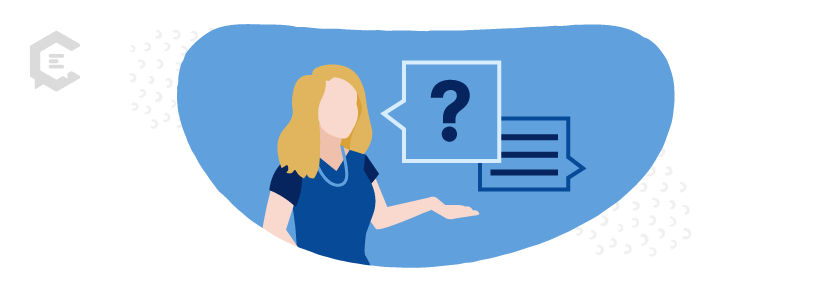
10 open-ended vs. closed question set examples for interviewers:
One pitfall that’s common and you really need to be cautious of with experts and executives is the false open-ended question. This is a question phrased so it could lead to a personal anecdote or insight, but could also be answered with a “No.”
While experts and execs usually like to talk about their work, they will sometimes answer something with a simple “No” because they haven’t thought about it before, and they don’t really have an opinion.
All the open-ended sample questions here are crafted to avoid the possibility of a “No.”
Interview example 1:
CLOSED: What’s your job title?
OPEN: How would you describe your professional specialty/expertise /niche?
Interview example 2:
CLOSED: What’s your focus right now?
OPEN: Tell me one of your key focuses right now and why you’re interested in it.
Interview example 3:
CLOSED: Do you like X trend?
OPEN: Name three of your favorite trends in our industry right now and why you like them.
Interview example 4:
CLOSED: What would you consider your key accomplishment in your field to be?
OPEN: Please walk us through the accomplishment that gave you the most satisfaction in your career.
Interview example 5:
CLOSED: What degrees, awards or certifications do you have?
OPEN: Of the degrees and awards you’ve received, which would you say are the most meaningful, and why?
Interview example 6:
CLOSED: Was it difficult to transition from [#1 well-documented career] to [#2]?
OPEN: You successfully transitioned from [#1 well-documented career] to [#2]. Explain to us how that happened.
Interview example 7:
CLOSED: Can you tell us who will be in your next project/speaking at your next event?
OPEN: How do you choose collaborators or speakers for your projects/events?
Interview example 8:
CLOSED: Where can someone go to learn more about what you do?
OPEN: What are a couple day-to-day practices of yours that people can implement for greater success/fulfillment in their own lives?
Interview example 9:
CLOSED: What’s new/next for you?
OPEN: What upcoming project or venture are you most excited about and why?
Interview example 10:
CLOSED: What social channels can we find you at?
OPEN: If we all go follow you on Instagram or Twitter, what kind of content are we going to see?
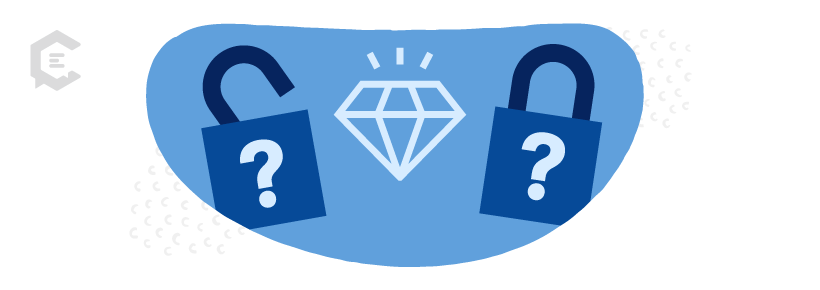
Open- and closed-ended questions are equally valuable.
While open-ended questions are a buzzword among salespeople and business coaches right now, we think the proper mix of open- and closed-ended is essential to any discovery process.
If you understand the difference between them, know how and for what purpose to use each, and can rework a closed-ended question into an open-ended question on the fly when needed, then you’re halfway to being a great interviewer.
Whether in sales or medical research or journalism, questions are a means to create connections and explore stories. They’re also a way to get useful data. One leads to the “why,” and the other leads to the “yes.”
The real question is: What’s next?
Now that you’re an expert on open and closed-ended questions, you’ll be a master at creating authentic engagement with your brand. But if you need some help, ClearVoice has got you covered. Our managed content creation and expert teams can help you produce content that can maximize your brand’s growth and impact. Connect with us here to see how.



